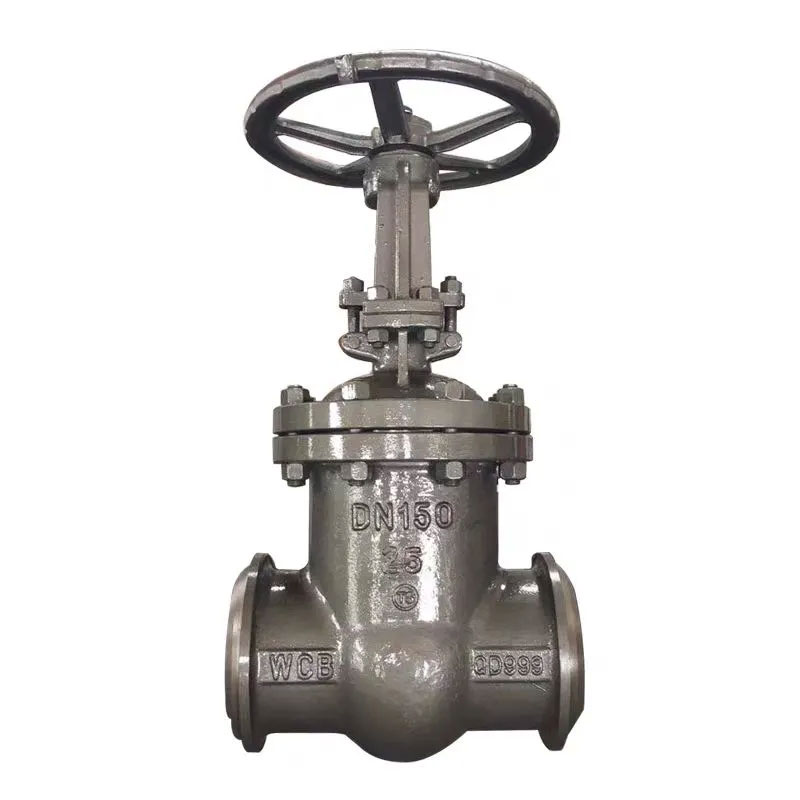How to Choose Flange Ball Valves That Meet the Standards
2025-06-23
Flange ball valves are crucial components in many industrial systems, ensuring smooth flow control in pipelines. These valves use a spherical closure element to regulate the passage of fluid and are commonly found in applications such as oil and gas, water treatment, chemical processing, and power generation. To ensure that the chosen flange ball valve meets industry standards and performs effectively, a comprehensive understanding of several key factors is required.
1. Understand the Application Requirements
The first step in choosing a flange ball valve is to clearly understand the application requirements. Every industrial process has specific needs related to pressure, temperature, and the type of fluid being controlled. By understanding these factors, you can ensure that the ball valve selected is designed to handle these conditions.
Pressure and Temperature: The ball valve must be rated to withstand the pressure and temperature of the system. The valve body and ball should be constructed from materials that can handle the maximum operational pressure and the extremes of temperature expected.
Fluid Type: Different fluids (liquids, gases, or slurries) impose unique demands on valves. The material of the valve should be compatible with the fluid being transported to prevent corrosion, erosion, or chemical degradation. For example, if the fluid is corrosive, a valve made of stainless steel or special alloys may be required.
2. Material Selection
The material of the flange ball valve is critical to its performance and longevity. Materials must be chosen based on both the environmental and operational conditions of the system.
Common Materials: Carbon steel, stainless steel, and brass are common materials used for flange ball valves. For aggressive environments, materials like duplex stainless steel or alloy 20 may be required.
Corrosion Resistance: If the application involves corrosive fluids, the valve material must be resistant to corrosion. Stainless steel (304 or 316) is commonly used due to its excellent resistance to corrosion, but other alloys like Hastelloy may be considered for particularly aggressive environments.
Temperature Resistance: Ensure that the material chosen for the valve body and ball can handle the required temperature range without warping or failing.
3. Valve Size and Connection Type
The flange ball valve should be appropriately sized for the pipeline in which it will be installed. The size of the valve is typically chosen based on the nominal diameter of the pipeline, but attention must also be given to the flow rate and the required pressure drop.
Flange Size: The flange connection size should match the pipeline’s flange dimensions, as specified by standards such as ASME B16.5 (for piping flanges). A mismatch in flange size could lead to leaks or inadequate sealing.
Connection Type: Flange ball valves come with different types of flanged ends, including raised face, flat face, and ring-type joint. The choice of connection type will depend on the system’s design requirements and the standard used for flange connections.

4. Pressure Rating and Standards Compliance
One of the most important factors when selecting a flange ball valve is ensuring that it meets the required pressure rating for the specific application. The pressure rating will determine how much pressure the valve can safely handle.
ASME Pressure Classes: Flange ball valves should conform to the ASME B16.34 standard for pressure rating. The ASME classes (e.g., 150, 300, 600) define the maximum pressure the valve can safely operate under. Make sure to choose a valve rated for the maximum operating pressure in the system.
Industry Standards: Flange ball valves must adhere to international standards such as ASME, ANSI, ISO, or API depending on the industry. For example, API 6D sets standards for pipeline valves, and ISO 5211 specifies mounting dimensions for actuator installation.
5. Ball Valve Design Features
The design of the valve itself plays an important role in its performance. Key design features to consider include:
Full Port vs. Reduced Port: A full-port valve allows the pipeline’s full bore through the valve, minimizing pressure drop and improving flow capacity. Reduced-port valves have a smaller bore, which may be suitable for applications where flow is less critical.
Ball Material and Coatings: The material of the ball within the valve is equally important. Balls made from stainless steel, chrome-plated steel, or coated with materials like PTFE or PFA provide better sealing and corrosion resistance.
Seats and Seals: Ensure that the valve seats and seals are made of materials that can withstand the operating conditions, such as temperature and chemical exposure. PTFE (polytetrafluoroethylene) is commonly used due to its excellent sealing properties.
Actuation: Depending on the application, the valve may require manual, electric, or pneumatic actuators. Consider the actuator type and make sure the valve is compatible with the chosen actuator.
6. Leakage Testing and Certification
Ensure that the flange ball valve has been tested and certified for leakage. Most industrial standards require valves to undergo rigorous testing before they can be used in systems. For example:
API 598: This standard covers valve inspection and testing, including pressure testing to ensure no leakage occurs under the rated pressure.
ISO 5208: This standard specifies testing procedures to ensure that the valve is tight, even under extreme pressure conditions.
7. Durability and Maintenance
Lastly, the durability of the flange ball valve must be considered. Choose valves that are designed for long-term performance and ease of maintenance. Regular maintenance intervals and clear guidelines for maintaining the valve can help extend its life and prevent costly downtimes.
Self-Draining Features: In certain applications (especially in the food and beverage or pharmaceutical industries), a self-draining valve design may be needed to ensure that the system remains sanitary.
Repairability: Look for valves with replaceable seats, seals, and balls, as this can extend the valve’s service life and simplify repairs.
Conclusion
Choosing a flange ball valve that meets industry standards is not a straightforward task. It requires consideration of multiple factors, including the application requirements, material selection, size and connection type, pressure rating, and compliance with relevant standards. Additionally, the valve’s design features, leakage testing, and maintenance ease should also be evaluated to ensure reliable and efficient operation. By carefully considering these elements, you can select the right flange ball valve that will perform optimally, reduce maintenance costs, and ensure the safety and reliability of your industrial system.
As a professional manufacturer and supplier, we provide high-quality products. If you are interested in our products or have any questions, please feel free to contact us.


